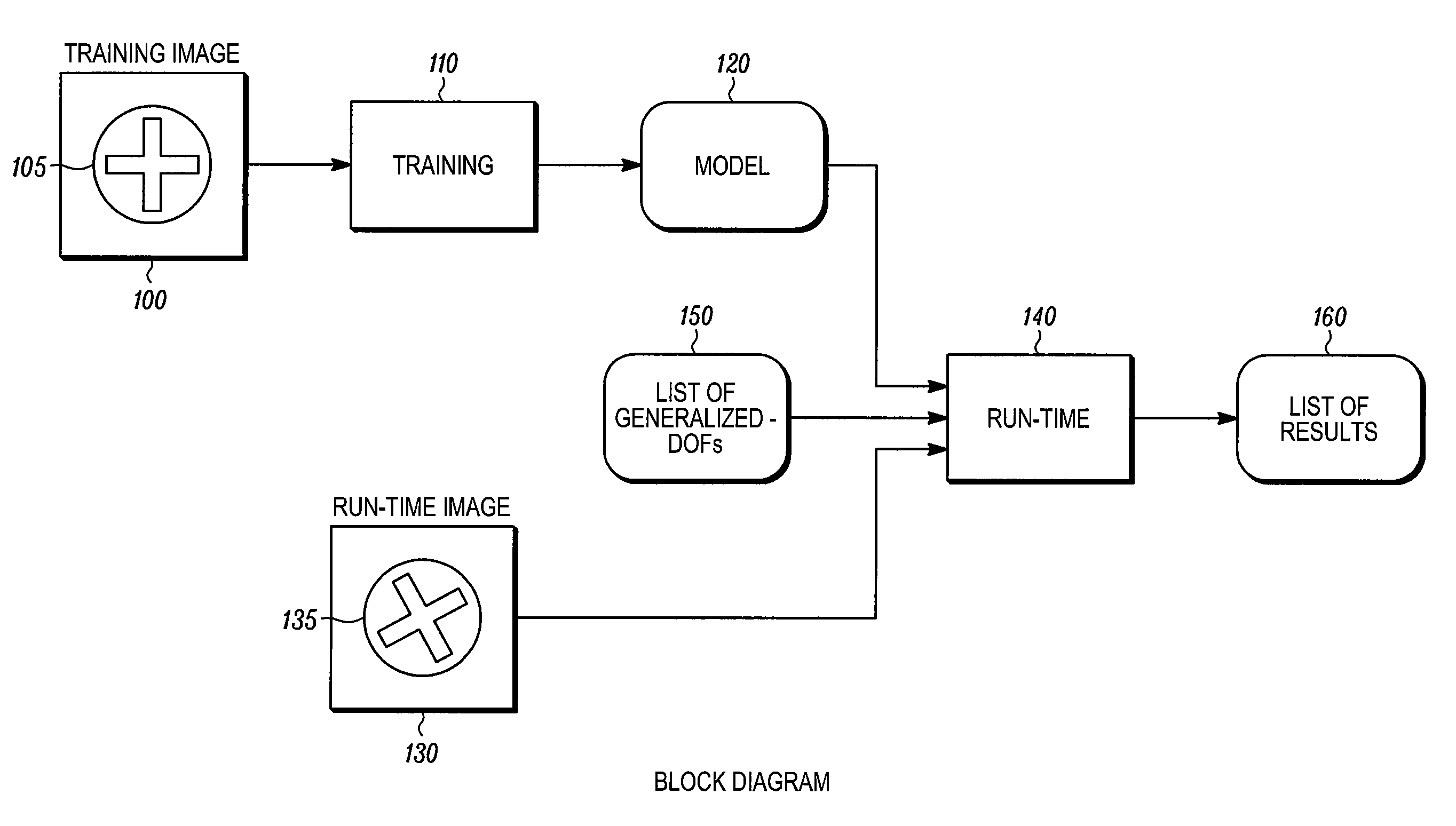Method for fast, robust, multi-dimensional pattern recognition
a multi-dimensional pattern and robust technology, applied in the field of fast, robust, multi-dimensional pattern recognition, can solve the problems of inability to detect fine variations, inability to reliably classify pixels as objects or background, and severe degradation of accuracy
- Summary
- Abstract
- Description
- Claims
- Application Information
AI Technical Summary
Benefits of technology
Problems solved by technology
Method used
Image
Examples
Embodiment Construction
[0112]FIG. 1 is a high-level block diagram of one embodiment of the invention. A training image 100 containing an example of a pattern 105 to be located and / or inspected is presented. A training step 110 analyzes the training image and produces a model 120 for subsequent use. At least one runtime image 130 is presented, each such image containing zero or more instances of patterns 135 similar in shape to the training pattern 105.
[0113]For each run-time image a run-time step 140 analyzes the image 130, using the model 120, and the list of generalized-DOFs 150. As a result of the analysis, the run-time step produces a list 160 of zero or more results, each result corresponding to an instance of the trained pattern 105 in image 130 and containing a pose that maps pattern points to corresponding image points, and individual probe rating information for inspection purposes.
[0114]FIG. 2 shows a preferred embodiment of image processing steps used by the invention during training step 110 a...
PUM
 Login to View More
Login to View More Abstract
Description
Claims
Application Information
 Login to View More
Login to View More - R&D
- Intellectual Property
- Life Sciences
- Materials
- Tech Scout
- Unparalleled Data Quality
- Higher Quality Content
- 60% Fewer Hallucinations
Browse by: Latest US Patents, China's latest patents, Technical Efficacy Thesaurus, Application Domain, Technology Topic, Popular Technical Reports.
© 2025 PatSnap. All rights reserved.Legal|Privacy policy|Modern Slavery Act Transparency Statement|Sitemap|About US| Contact US: help@patsnap.com



